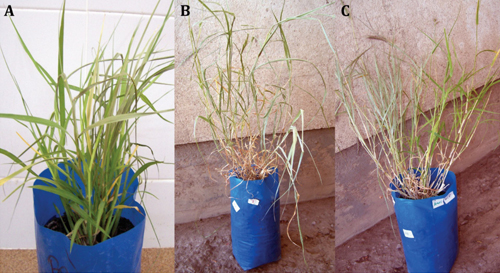Effect of cold stress at cellular and foliar level and regrowth capacity of three Cenchrus ciliaris L. cultivars: Americana, Biloela and Texas 4464
Keywords:
Buffelgrass, abiotic stress, electrical conductivity, cold damageAbstract
Buffelgrass (Cenchrus ciliaris L.) a native pasture species of Africa is widely used in arid regions because of its forage productivity and quality. It could become serious invasive species, not only for crops but also in natural vegetation. Buffelgrass is highly affected by low temperatures at all stages of its life cycle. The objective was to determine the behavior of three buffelgrass cultivars (Americana, Biloela, Texas 4464) under cold stress and define the critical temperatures. To determine the effect of cold stress on the plasma membrane, foliage damage and survival (regrowth), it was evaluated relative electrical conductivity (ECr) of leaves, percentage of foliar damage and the ability of regrowth after exposure to 2 temperatures (-5ºC and -10ºC) with 2 exposure times (4 and 7 hours). The results showed a higher percentage of foliar damage and greater ECr as temperature decreased and hours of exposure increased. A similar response was observed when survival (regrowth) was evaluated. There were no significant differences among cultivars in both temperature treatments and time when the regrowth was evaluated.

Published
Issue
Section
License
Aquellos autores/as que tengan publicaciones con esta revista, aceptan las Políticas Editoriales.


